accueil site > Paysage et patrimoine > 01. Teaching materials > 04. High School > From the sacred landscape to the profane A project for four totems - Unu - (...)
- 01. Fiches pédagogiques
- 01. Teaching materials
-
02. Jardin sans frontière : une école pour développer les compétences -clés en Europe
- 04. Partenaires
- 05. Rencontres transnationales
- 14. À l’école du jardin. Mobilités de formation dans les jardins d’Europe
- 15. À l’école européenne du jardin. Paroles de formateurs sur leurs formations "entre pairs"
- 16. A l’école auropéenne du jardin. Paroles d’apprenants sur leurs mobilités Erasmus+
- 19. Petit glossaire "européen" du jardin
- 20. Dissémination
- 21. Exploitation locale du projet
- 03. Un nouvel Erasmus+ : Le bleu européen comme étendard contre l’exclusion des adultes
-
09. Erasmus+ partenariato
-
Cammini del Blu in Europa
- 01. Incontri transnazionali
- 05. Progetti blu di partners
- 10. Percorsi europei del Blu
- 20. Storie blu
- 40. Disseminazione
- 43. Transcultural Carpet Blue
- 45. Missive blu
- 46. Glossario blu
- 47. Schede didattiche "Pedagogia del colore blu in Europa"
- 48. Illustrazioni delle schede didattiche : Mostra delle opere degli studenti
-
Giardino senza frontiere. Una scuola per lo slivuppo di competenze chiave in Europa
- 04. Partners
- 05. Riunioni transnazionali
- 14. Alla scuola del giardino. Mobilità di formazione nei giardini d’Europa
- 15. Alla scuola del Giardino. Parole di formatori sul loro addestramento "tra pari"
- 16. Alla scuola del giardino. Parole dei discenti sul loro Erasmus + Mobilità
- 19. Piccolo glossario europeo del giardino
-
Cammini del Blu in Europa
-
11. Erasmus+ Partnership
- 01. Transnational Meetings
- 05. Blue Projects of partners
- 07. European roads of the Blue
- 10. Blue stories
- 40. Dissemination
- 43. Transcultural Carpet Blue
- 45. Blue Missives
- 46. Blue Glossary
- 48. Roads of the blue : the file
- 50. Illustrations of the pedagogic file : exhibition of works of learners
-
51. Garden Without Borders : A School for Developing Key Competences in Europe
- 04. Partners
- 05. Transnational meetings
- 14. At Garden School. Training mobilities in the gardens of Europe
- 15. At Garden School. Words of trainers on their "peer-to-peer" training
- 16. At Garden School. Learners’ words about their mobility Erasmus +
- 19. Small European glossary of the garden
- 20. Dissemination
-
11. Partenariats Erasmus+
-
01. Les chemins du bleu en Europe
- 01. Rencontres transnationales
- 05. Projets bleus des partenaires
- 10. Routes du Bleu en Europe ...
- 20. Histoires Bleues
- 40. Dissémination
- 43. Transcultural Carpet Blue
- 45. Missives bleues
- 46. Glossaire bleu
- 47. Formation pédagogique : fiches pédagogiques et référentiel de compétences clés et transversales
- 50. Illustrations des fiches pédagogiques : exposition des travaux des apprenants
-
01. Les chemins du bleu en Europe
- 12. Pedagogic tools
- 17. Fiches pédagogiques
- 17. Schede Pedagogiche
Paysage et patrimoine
From the sacred landscape to the profane A project for four totems - Unu - as symbols of yesterday, today and tomorrow’s dimanche 29 janvier 2012
 PROJECT Realization of four totems (unu) symbolizing the past, present and future of Polynesia, to be located in the public gardens
PROJECT Realization of four totems (unu) symbolizing the past, present and future of Polynesia, to be located in the public gardens
PARTICIPANTS
Twenty students, sculptors and engravers in their second and third year of training and three teachers of CMA, Centre of Art and Craft of Tahiti.
OBJECTIVES
![]() Reflection and exchanges on the concept of art and craft
Reflection and exchanges on the concept of art and craft
![]() In-depth in their knowledge of the ancestral Polynesian culture
In-depth in their knowledge of the ancestral Polynesian culture
![]() Exposure to the great artistic movements
Exposure to the great artistic movements
![]() To put the ‘exercise of imaginative perception’ (Paul Klee) at stake
To put the ‘exercise of imaginative perception’ (Paul Klee) at stake
![]() To develop the sense of innovation
To develop the sense of innovation
![]() In-depth in their artistic acquisitions : technique and know-how
In-depth in their artistic acquisitions : technique and know-how
![]() Research for ancient techniques
Research for ancient techniques
![]() Approaching to and using new materials : golden foils, perspex and mosaic
Approaching to and using new materials : golden foils, perspex and mosaic
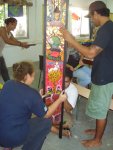 |
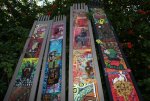 |
 |
COMPETENCES AND CULTURAL REFERENCES
![]() Practising sculpture and etching
Practising sculpture and etching
![]() Knowledge of the traditional Polynesian craftsmanship (symbolic : tattoo, archaeological remains and ancient sculpture)
Knowledge of the traditional Polynesian craftsmanship (symbolic : tattoo, archaeological remains and ancient sculpture)
MATERIAL
![]() Video projector
Video projector
![]() Plywood boards : 30x30, 40x30
Plywood boards : 30x30, 40x30
![]() Plexiglass
Plexiglass
![]() Copper foils
Copper foils
![]() Mixtion to gild
Mixtion to gild
![]() Acrylic paints
Acrylic paints
![]() Paints
Paints
![]() Brushes
Brushes
DEVELOPMENT
The steps
1. Acquisition of knowledge of the landscape with the students
To realize a totem, the knowledge of the landscape is necessary in order to make the symbolic aspect emerge : natural and cultural landscapes (marae, unus)
The marae, Polynesian place of worship, and the unus are indissoluble
The marae is an outdoor compound where religious ceremonies used to take place during which old people worshipped their god and their deified ancestors called tupuna
Each family, in the large sense of the word, owned a marae. It was the supreme chief, Arii Nui (the great king) the one who owned the most remarkable marae, where human sacrifices were practised at times.
The Unus were erected inside the marae : they are geometrically shaped wooden sculptures (wooden carvings), human or animal-like, that embody the tie with the spirit of a god or of an ancestor.
2. Employment of the pedagogical card from the Association Paysage et patrimoine sans frontière :
Dans le jarden de Théodoric : du parcours sensorial au carnet de voyage
In Theodoricus’ garden : from the sensorial experience to the travel notebook.
3. Discovery of the Liberty art movement. A new way to express oneself
The Liberty style is characterized by imagination, the presence of rhythms, colours, ornaments inspired to trees, flowers, bugs, animals. It introduces the theme of perception into the routine decoration.
It was born from common ideas and ideals as an aspiration to a common style finding its expression in diversity.
The Liberty style involves the acceptation of the differences of mode and spirit among beings as it proceeds from an ample openness of thought.
The conception around Liberty gave impulse to the rebirth of craftsmanship. It is the style of the individual artist that focuses on the artist’s work and disregards that of machines. (Source : Wikipedia).
4. Power point on the Liberty style and Gustav Klimt
5. Debate with the trainees around art and craftsmanship starting from the power point video and the presentation of Patrick Guichard’s work, painter and trainer, partner of the Association Artiste No Tahiti.
6. Power point on the artist Jean-Michel Basquiat
7. Debate with the trainees starting from the power point video on Jean-Michel Basquiat, his work and his multicultural origins.
8. Realization of four totems (m. 2,40) revisiting the traditional unus erected in the worshipping places (marae) of the old polytheistic Polynesian religion.
SUBJECT
The totem, homage to ancestors and gods, retrieves its sense : a bridge between the sacred and the profane landscape, a tale of space, an instrument for comprehending the taking hold of collective knowledge.
Five students are engaged on each totem. Each of them will work on a piece of wood (20x40) that will be fixed on wooden pillars referring to ‘unus’.
Each student has realized his/her work by employing the techniques learnt on occasion of the courses of History of Art and artistic practice, re-interpreting the contemporary cultural contributions and the traditional ones : Polynesian words and concepts such as atua= gods, tiki, *to’o… weeping god, etc.)
*To’o : Ari’i or chiefs/kings. They were in relationship with gods by means of objects, particularly the to’o generally consisting in a wooden framework covered in a tight net of woven coconut fibres and various layers of tapa wrapped up with red feathers.
Sometimes, human traits were represented on the surface of the wrapping : mouth, nose, eyes, arms, hands and navel. The object belonged to the family and was preserved in the marae in a sacred casket.
The to’o embodied the materialization of the divine : it was the embodiment of the god ‘Oro, both god of war and fertility (Source : World roundabout).
Exhibition of the Unus in the public gardens.
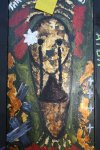 |
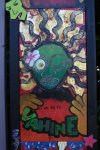 |
EVALUATION
It will rest on the ability to :
![]() Take hold again of and re-invest knowledge and techniques in the context of a team work
Take hold again of and re-invest knowledge and techniques in the context of a team work
![]() Set up a project and complete it
Set up a project and complete it
![]() Cooperate and help one another
Cooperate and help one another
![]() Be able to present one’s work
Be able to present one’s work
Patrick Guichard
Association “Artiste No Tahiti “FR















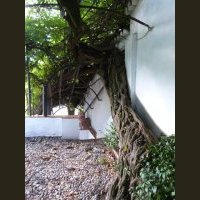
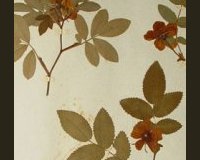

 Version imprimable
Version imprimable